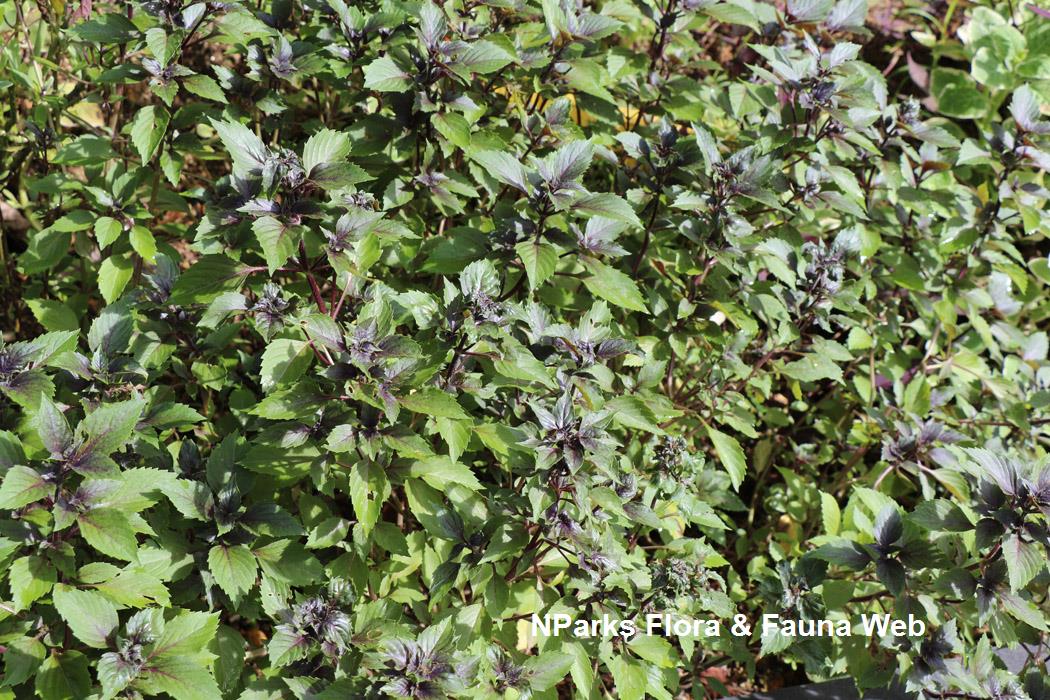
Name
Classifications and Characteristics
| Plant Division | Angiosperms (Flowering Seed Plants) |
|---|---|
| Plant Growth Form | Herbaceous Plant |
| Lifespan (in Singapore) | Annual |
| Mode of Nutrition | Autotrophic |
| Maximum Height | 0.6 m |
| Maximum Plant Spread / Crown Width | 0.3 m |
Description and Ethnobotany
| Foliage | Dark purple to black leaves are elliptic with a toothed leaf margin. In Singapore, the dark colour may fade to olive green along the leaf margin. |
|---|---|
| Others - Plant Morphology | This cultivar was bred by researchers at the University of Connecticut (USA) in the 1950s. It is a type of sweet basil. |
| Similar | This cultivar is similar to 'Purple Ruffles' but the latter is darker purple and more glossy. |
| Cultivation | This cultivar grows best under at least 6 hours of bright light in moist, well-drained soil. Promptly remove the flower buds to promote bushy, leafy growth. |
| Ethnobotanical Uses | Edible Plant Parts : Edible Leaves Food (Herb or Spice) |
Landscaping Features
| Landscape Uses | Container Planting |
|---|---|
| Thematic Landscaping | Economic Garden |
Plant Care and Propagation
| Light Preference | Full Sun, Semi-Shade |
|---|---|
| Water Preference | Moderate Water |
| Rootzone Tolerance | Moist Soils, Well-Drained Soils, Fertile Loamy Soils |
Foliar
| Mature Foliage Colour(s) | Green - Light Green, Purple |
|---|---|
| Mature Foliage Texture(s) | Smooth |
| Foliar Type | Simple / Unifoliate |
| Foliar Arrangement Along Stem | Alternate |
| Foliar Attachment to Stem | Petiolate |
| Foliar Shape(s) | Non-Palm Foliage |
| Foliar Venation | Pinnate / Net |
| Foliar Margin | Serrate / Toothed |
| Foliar Apex - Tip | Acute |
| Foliar Base | Rounded / Obtuse |
Floral (Angiosperm)
| Flower & Plant Sexuality | Bisexual Flowers |
Image Repository
Others
| Master ID | 32742 |
|---|---|
| Species ID | 7154 |
| Flora Disclaimer | The information in this website has been compiled from reliable sources, such as reference works on medicinal plants. It is not a substitute for medical advice or treatment and NParks does not purport to provide any medical advice. Readers should always consult his/her physician before using or consuming a plant for medicinal purposes. |






